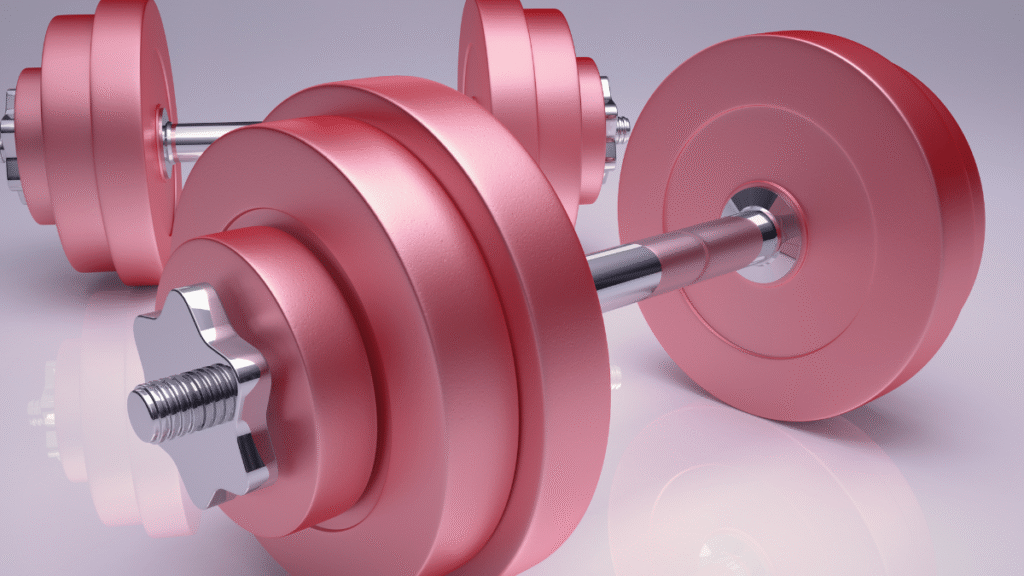Strength Training Isn’t Optional for Women on GLP-1s
GLP-1 medications are helping women lose weight and feel in control of food again, and this is amazing news for those who have struggled with their health.
These meds change how your body handles energy. They calm hunger, help stabilize blood sugar, and make it easier to eat less. All incredibly fantastic things!
But when your body changes this quickly, your muscle tissue changes too. And muscle isn’t just for strength; it’s a major part of your metabolism.
That’s why resistance training is non-negotiable on GLP-1s.
It’s what keeps your metabolism flexible, your energy steady, and your results sustainable.
Muscle Is the Body’s Glucose Storage System
Medications like GLP-1 improve how your body handles glucose. They help insulin do its job by moving glucose (blood sugar) out of your bloodstream and into your tissues for energy.
Your muscles handle most of the glucose in your bloodstream by storing and using it as fuel. When you lose muscle during weight loss, you also lose some of that storage space.
With fewer “parking spots” for glucose, insulin has to work harder to keep blood sugar steady, and over time, that’s what can lead to insulin resistance.
Strength training changes that.
It builds new muscle tissue, which increases the number of “receptors,” or entry points, that allow glucose to move into your muscles.
Inside those cells, more enzymes, the chemicals that break down and process nutrients, go to work turning that glucose into energy your body can actually use for movement, recovery, and daily function.
Together, those changes make your body more responsive to insulin and better at keeping blood sugar balanced.
Strength Training Makes Your GLP-1 Work Smarter
When you hinge, squat, lift, press, or pull, you send a signal deep into your muscle cells to adapt. Over time, that adaptation improves how your body handles energy. This happens through a few key changes inside your muscles:
- Glucose transporters – tiny doors that let glucose (sugar) into your muscles.
- Mitochondria – the “engines” that burn glucose and fat for fuel.
- Insulin receptors – the locks that open when insulin knocks.
All of this helps your medication work smarter and your body become stronger, more stable, and better at using energy.
Protecting Muscle Protects Your Metabolism
During fast weight loss, even when it’s intentional, your body doesn’t only burn fat; some lean tissue is almost always lost, especially if you’re not eating enough protein or strength training.
That muscle loss can slow your metabolism because less muscle means fewer calories burned at rest, lower energy, and slower recovery.
This is why some women feel weaker or more tired as the weeks go on; they’ve lost the tissue that used to power their daily movement.
Strength training reverses that and rebuilds what the scale can’t measure:
- Muscle (your body’s main calorie- and glucose-burning tissue)
- Bone density (the structure that keeps you strong and supported as weight drops)
- Stability (how well your joints and muscles control movement)
- Balance (your ability to move confidently without tripping or falling)
- Strength (how efficiently your body can perform and recover)
- Metabolic resilience (your body’s ability to adapt and maintain energy even as weight changes)
When you train consistently, you’re teaching your body to protect that essential tissue, the part that supports every movement, every calorie you use, and every bit of strength you feel.

Muscle Is a Messenger
Sometimes we think of muscle as mechanical, but it’s also metabolic. It doesn’t just move your body; it communicates with it.
Every time you challenge your muscles, they release chemical messengers called myokines that help regulate hunger, mood, and brain health.
Those signals can also help calm chronic low-grade inflammation, something that’s linked to insulin resistance, tiredness, and metabolic slowdown.
So, while your GLP-1 is improving insulin and blood sugar from one angle, your muscles are supporting the same systems from another, creating a balanced, less inflamed, and more energetic body.
You Don’t Need a Gym. You Need a Plan
You might assume you need fancy equipment to strength train.
You don’t.
You can build strong, functional muscle anywhere; no special equipment required.
Start with what you have: body weight, resistance bands, or dumbbells.
Focus on large muscle groups and controlled movement:
- Lower body for strength and support: glutes, quads, hamstrings
- Upper body for posture and stability: back, shoulders, chest
- Core for balance and control: deep abdominals and stabilizers
Train two to three times per week and aim for progression (a little more challenge each time).
Slow, steady reps under tension do more for your metabolism than rushing through a circuit. Exhaustion isn’t the goal. Control is.
And remember, strong doesn’t mean bulky; it means capable.
Movement Between Workouts Matters Too
Your muscles act like sponges for glucose, but they only absorb when you move. You don’t have to go hard every day, but you do have to keep going. Walking, light mobility, and daily activity keep your muscles sensitive to insulin.
Movement is especially important because when your appetite is smaller, which is common on GLP-1s, overall energy intake can drop, and that means fewer nutrients available for maintaining muscle.
Staying consistent helps fill that gap. Every step, stretch, or session tells your body to hold on to strength.
It’s Not About Coming Off or Staying On
You don’t have to know how long you’ll be on your GLP-1. Your focus right now is building a body that can thrive with or without it.
For some women, medication is a long-term tool because it keeps their biology balanced. For others, it’s a bridge until they feel they’ve built the habits and structure to sustain a healthy weight.
Either way, muscle is your foundation. It supports your metabolism, your strength, and your independence, no matter what GLP-1 era you’re in.
Strength Is the Anchor
The scale can’t tell you how strong your metabolism is. It can’t show you how stable your blood sugar feels or how much energy you have throughout the day.
But your movement can.
Move with control, and your energy steadies.
Lift with intention, and your appetite and mood find balance.
Build strength, and you create physical and emotional stability.
GLP-1s may start the process. Strength training sustains it.
Key Takeaway
GLP-1s help your body handle food more efficiently. Strength training teaches your body how to use that efficiency for long-term health.
You don’t have to “lift heavy” all the time, or live in a gym. You just have to move with purpose.
When you build and protect your muscles, you’re not just getting stronger, you’re making your GLP-1 work smarter.
So, if you’re currently using GLP-1s, don’t think of exercise as something to “add in later.” It’s a must-have because it’s what makes every other piece of your plan work better.
If you’re looking for extra support, I offer personalized virtual training for women in any phase of their GLP-1 era. Together, we focus on strength, stability, and long-term results. Click here to learn more.
Photo Credits
Home workout by Mixetto from Getty Images Signature
Fitness trainer conducting a virtual session on a laptop by Arsenii Palivoda from Getty Images
This article is for educational purposes and is not intended to replace medical consultation. Always consult a healthcare professional before making health-related decisions.
Most programs teach exercise.
The Remedy Method retrains how your body communicates: how your brain, muscles, and movement work together again after change.
It blends corrective exercise, Pilates control, and progressive strength in a way that helps your body relearn balance, rebuild strength, and move with confidence again.
If your body feels different and you’re not sure where to start, this is the method designed for exactly that.





